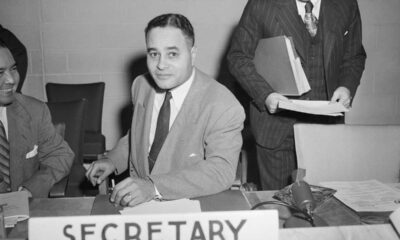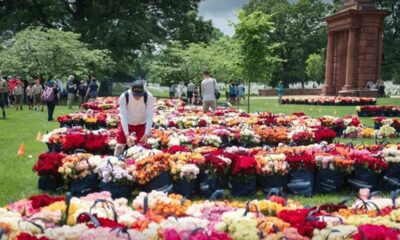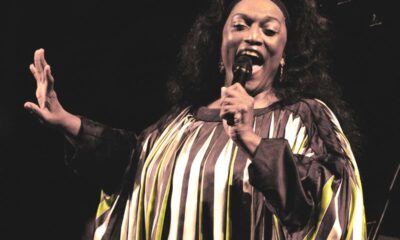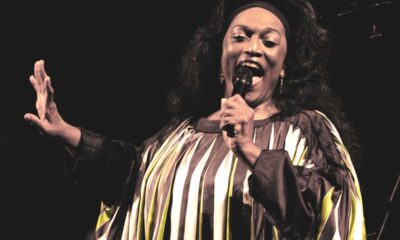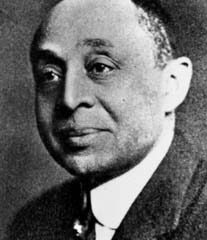Black History
Dr. Ralph Bunche, an Outstanding American
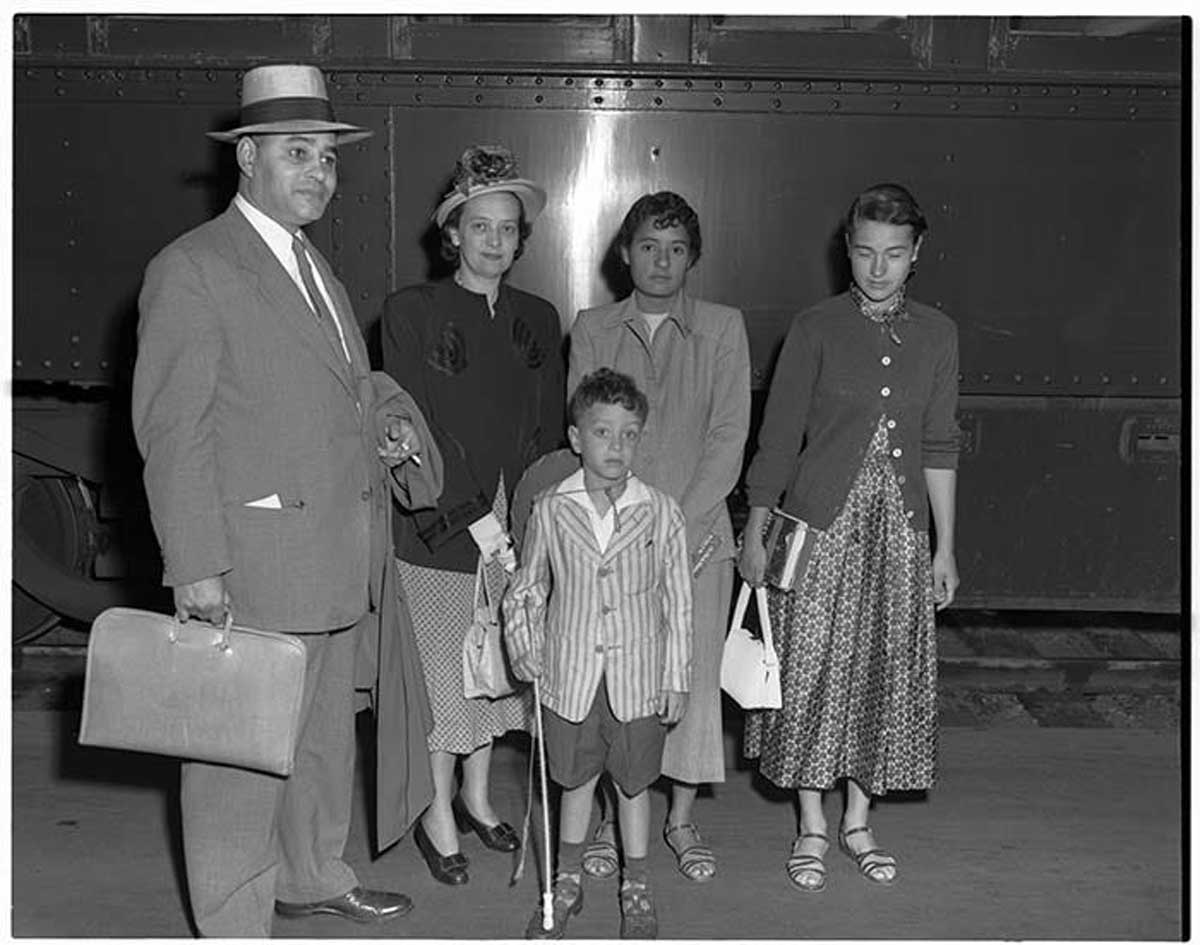
We don’t hear much about him these days. That’s just not right.
by Suzanne Spellen
Most of this page’s readership may not have been around when this amazing man won the Nobel Peace Prize in 1950. I wasn’t born yet, either, but in my house growing up, we knew Ralph Bunche’s name, even if as young children, my brother and I had only a very hazy idea of who he was, or what he did. My parents were as proud of him as if he had been a relative, or a good friend.
You see, my childhood took place at a time when black people (we were still Negro then) rarely made the news for anything good, unless you were an entertainer or an athlete. And most certainly, black people never made the news for international affairs; that was just unheard of. But there he was…Ralph Johnson Bunche, not caring that he was going where no American Negro had gone before, he was just doing his job.
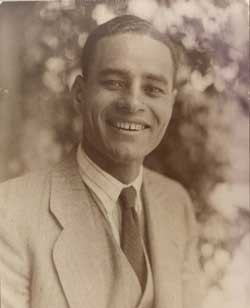
My parents probably knew that the Bunche family lived not all that far from us in Queens. We lived in St. Albans, and the Bunche house was in Kew Gardens. Not all that far, at all, but a world away. Mr. Bunche’s life was a world away, as well, in the newly built halls of the United Nations, working with the leaders of the entire world.
Kew Gardens was the Promised Land, the street where the Bunche family lived, a lush suburban collection of fine homes on landscaped lawns. St. Albans was Striver’s Row, closely packed homes that mimicked the Banker’s Tudors of wealthier neighborhoods. But it didn’t matter. Ralph Bunche made us proud; the way Barak Obama would make us proud almost sixty years later when he was elected president. I know how my parents felt.
Ralph Bunche was born in 1903, in Detroit. His father was a barber, and his mother was an aspiring musician. He lived with his two sisters and his grandmother, who had been born in slavery. When he was twelve years old, both of his parents died and his grandmother took the three children to Los Angeles to live. Young Ralph excelled in school, showing impressive academic brilliance, as well as excellent debating skills and athletic prowess. He entered the University of California with a scholarship and worked as a janitor at night for personal money. He majored in international relations, and graduated summa cum laude, valedictorian of his class, in 1927.
He received a scholarship from Harvard, and with a gift of $1000 raised by the black community in Los Angeles, he came east, completed his master’s in 1928, and worked for the next six years on his doctorate, while teaching at Howard University, in Washington DC. He became the first African American to be awarded a Ph.D. in Government and International Relations from Harvard. The next ten years were to be spent in research in Africa, a prize-winning dissertation, other scholastic awards and accolades, and post-graduate work in anthropology at Northwestern, the London School of Economics, and even the University of Capetown in apartheid South Africa.
He was the Chair of the Political Science Department at Howard, from 1928 to 1950, taught at Harvard between 1950 and 1952, and was a member of the New York City Board of Education from 1958 to 1964. He was also a member of the Board of Overseers of Harvard between 1960 and ’65, and a trustee at Oberlin College and Lincoln University, among other institutions of higher learning. An impressive set of credentials, indeed. Somewhere in there, he also found time to woo and marry Ruth Ethel Harris; a Washington DC schoolteacher. The couple married in 1930 and would go on to have three children, two girls, and a boy.
Ralph Bunche’s expertise in colonial African states led to several government positions during the World War II years, which led to a State Department position to plan the United States postwar strategies towards African states. He served as an expert on African affairs at the Dumbarton Oaks Conference in 1944, which led to the formation of the United Nations. He was also a participant and advisor at the historic San Francisco Conference in 1945, where the charter of the UN was drafted.
In 1946, UN Secretary-General Trygve Lie asked Bunche to leave the State Department and lead the UN’s Department of Trusteeship, which took care of problems between nations that had not yet achieved self-government. He would be associated with the United Nations for the rest of his life. Between 1947 and 1949, Ralph Bunch would work on the most important assignment of his career: brokering peace in Palestine. The fighting between the Arabs and the new state of Israel was getting worse.
The UN appointed Count Folke Bernadotte as mediator and Ralph Bunche as his chief aide. Four months later, on September 17, 1948, Count Bernadotte was assassinated, and Bunche was named acting UN mediator on Palestine. He spent the next 11 months tirelessly brokering a peace treaty, finally getting an armistice between Israel and Egypt, followed by one between Israel and Jordan, Syria and Lebanon.
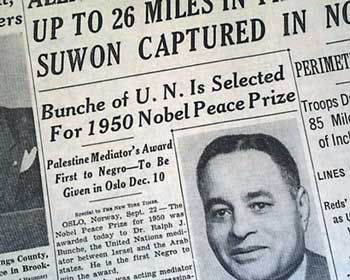
He came home a national hero, with a ticker tape parade on Broadway, a Ralph Bunche Day in Los Angeles, and awards and accolades, culminating in the Nobel Peace Prize in 1950. He continued to work at the UN as Under-Secretary-General, serving as a troubleshooter for the terms of three Secretaries-General. He brokered peace treaties in several volatile parts of the world and developed the mission of the United Nations peacekeeping forces.
He also was a pivotal force in the creation of two of the UN’s most important programs; the Atomic Energy Agency and the Developmental Program, which helped emerging countries. He served as Under-Secretary for over 20 years, the highest rank an American has ever achieved in that organization.
During this time period, he also worked for civil rights for African Americans here at home. With all of the impressive work on his resume, and even after winning the Nobel Peace Prize, he could not get a first-class hotel room in Washington DC, or sit in the front of the bus in Mobile, Alabama. He was not welcome at a Woolworth’s lunch counter and could not sit downstairs in a movie theater anywhere in the South. He would not have been able to enroll his children in a white school in many parts of the country. For all is importance at the UN, he couldn’t rent in the East Side Manhattan neighborhoods surrounding the United Nations complex.
Long before the UN, Bunche was a member of the so-called “Black Cabinet” organized to consult FDR’s administration on minority problems. He declined an offer by Harry Truman to be the Assistant Secretary of State, in part because of segregated housing in Washington DC.
He helped to lead the Montgomery March of Martin Luther King in 1965 and supported programs by the NAACP and the Urban League. His stance on segregation, racial prejudice, and rights for blacks and other minorities was very clear: we should all have equal rights and opportunities. Racial prejudice had no basis in science, and segregation and democracy were incompatible. He proved that every day.
The Bunche family moved to 115-24 Grosvenor Road in Kew Gardens after he won the Nobel Peace Prize. The family had moved from Washington DC to New York when Dr. Bunche helped found the United Nations. Initially, the UN was headquartered in Lake Success, just across the Nassau County line, and the UN built a housing complex in Parkway Village, in Jamaica, Queens. The Bunche family lived there until 1952. But space at the complex was cramped, so they went house hunting, and found the house on Grosvenor Road.
The owner of the house was a great admirer of Ralph Bunche, so much so he lowered the price of the house for him, and using the prize money from the Nobel, the Bunche’s were able to buy the house. They moved into the large Neo-Tudor in 1952, and the family lived there until Mrs. Bunche’s death in 1988.
The house was built in 1927 as a part of the original Kew Gardens development. During this time of suburban development, many homes were some kind of Revival style: Tudor, Colonial, Dutch Colonial, Mediterranean, etc. The Tudor and Medieval-style houses were especially popular with developers and the public. Something about stone, half-timbering, the faux exposed brick, and all of the small details, resonated as comfort, safety, and prosperity to the public at large. It still does. The house sits on a small rise, surrounded by shrubbery and trees. It’s quite picturesque and very nice. It was home to the Bunche family for over thirty years.
Ralph Bunche was able to achieve much in his lifetime before he died in 1971. He helped make the United Nations a force for peace and economic development around the world and helped many developing countries go from colonies to independent nations. World peace may never happen, but he came as close as any man to making it possible.
He also showed America that an ordinary African American, given the same opportunities as any white man in America, could succeed, no- he could excel in whatever his chosen pursuit. Today, there are elementary and high schools across the country named after him. His alma mater, UCLA, named a building after him, with a statue at the entrance.
The Library of the US Department of State, the oldest Federal government library, founded by Thomas Jefferson in 1789, was renamed in 1997. It is now the Ralph J. Bunche Library. But in spite of all the namings, Dr. Bunche is not remembered as much as he should be. He deserves to be in every American history book, and not just remembered during Black History Month.
He was indeed a great man who showed the world what a life of scholarship and international accomplishment could look like in spite of baseless prejudices. He was always proud of who he was and where he came from, as were my parents, and that is what they taught their children. He was a family hero back when we were growing up, and for me, newly rediscovering more and more about him decades later as an adult, he remains just as heroic.


